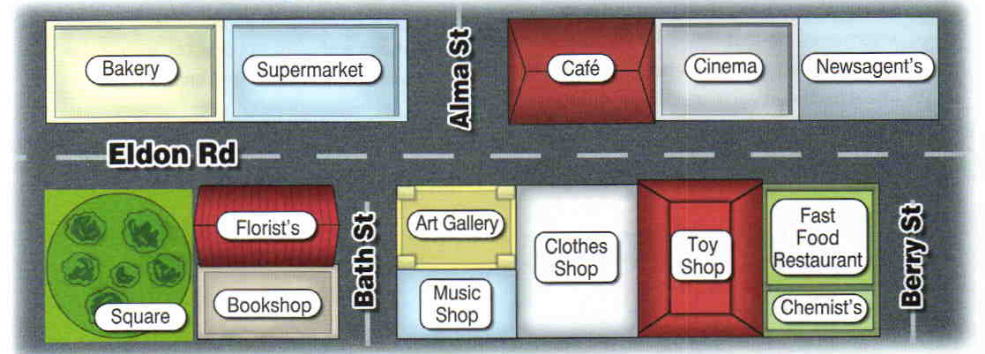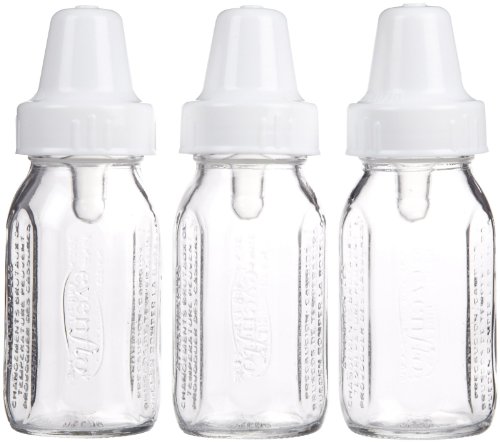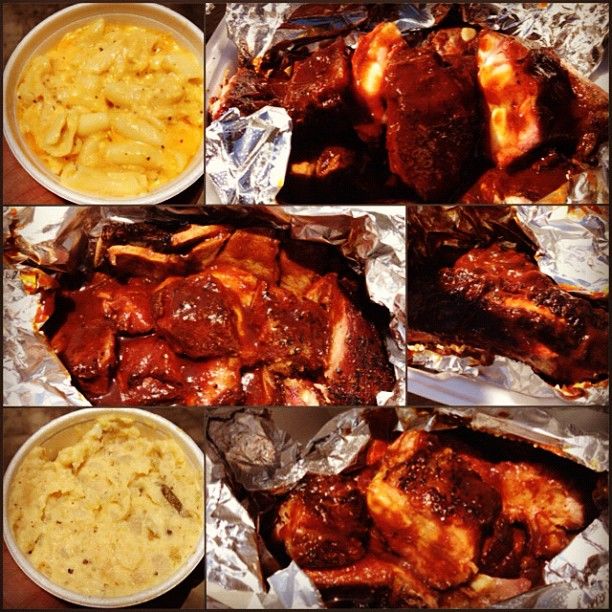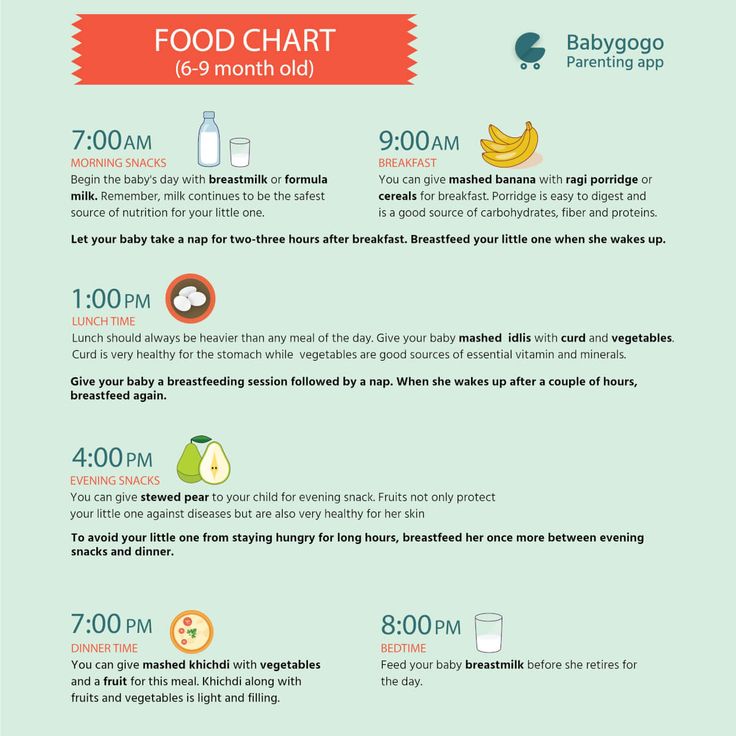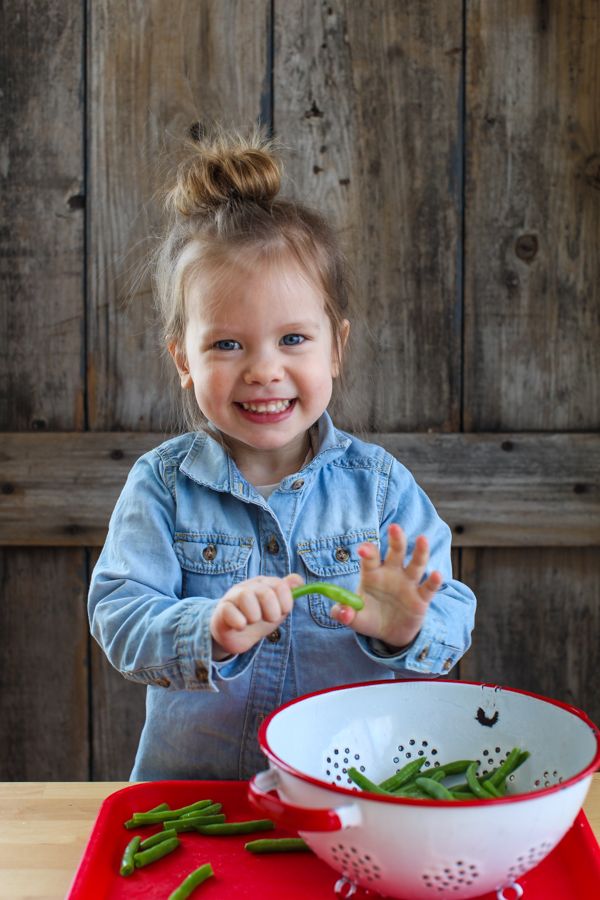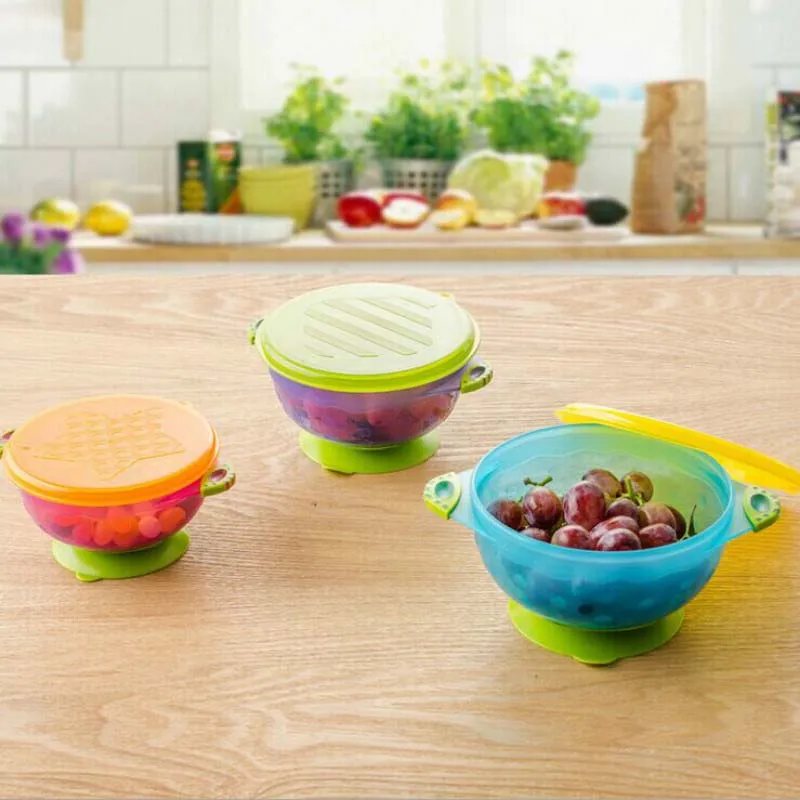Mixed feeding baby poop
What Does a Combo-Fed Baby Poop Looks Like?
Your baby can’t talk but his poop can tell you a lot about his health, that’s why you should pay attention to his stools: color, consistency, frequency, and smell. Especially for a combo-fed baby because he drinks from two sources that’s why the poop will be different from exclusively breastfeeding. Therefore, I have done a lot of research from trusted sources and asked many moms to bring you this piece of content to help you to ensure your baby’s health.
In this article, I will talk about what a combo-fed baby poop looks like and what are the warning signs to worry about.Advertisements
1 What does a Combo-Fed Baby Poop Looks Like?
2 Combination Fed Baby Poop Color and Consistency :
3 Baby Poop Colors You Should Worry About :
4 How Often Should a Combination Fed Baby Poop? :
5 Combo-Fed Baby Poop Smell :
6 Combo-Fed Baby and Constipation :
7 Mix-Fed Baby Poop and Diarrhea :
8 Mucus in Combo-Fed Baby Stool :
9 Mixed Feeding Baby with Goat Milk Formula :
10 Mixed Feeding Baby With Differents Brands:
11 Conclusion:
What does a Combo-Fed Baby Poop Looks Like?
Combo-fed baby poop is often brown watery with white seeds like curdled milk with a smelly odor, and a frequency of 2 to 4 days, as it could change depending on the ratio and type of formula used for combination. This is all normal except for the black, red, white, and grey colors or not pooping for more than 5 days or very loose stools.
After eating solid foods the poop will have a firmer consistency and a different color.
I will dive into detail about mix-fed babies and constipation, and diarrhea. Also what color, consistency, frequency, and smell are when combined with different formulas, so stay with me !!
Combination Fed Baby Poop Color and Consistency :
A combo-fed baby has a brown watery poop with white seeds like curdled milk. In the case of using a ratio of formula more than breastmilk the poop will be mustard-yellow-like and a bit thicker. Furthermore, combined with formulas containing probiotics and a high amount of iron give a dark green poop, all that is normal.
The mix-fed baby poop is often greenish in the morning and yellow in the afternoon.
I will give you each time comparison between breastmilk and formula in terms of color, consistency, frequency, and smell to get an idea about what should your combo-fed baby poop looks like according to the ratio of formula with breastmilk and the type you are using.
Breastfed baby poop is often mustard yellow, green, or brown, pasty in texture with seeds, whereas babies who are on formula have darker poops with a yellow to a greenish color and peanut butter-like in consistency.
If you are seeing often a dark green color then you probably use a supplement with a high amount of iron, it’s fine, but if you want to avoid this color try to choose a supplement with a low amount of iron.
Related: best 9 generic brands for nutramigen formula (cheap!!)
Baby Poop Colors You Should Worry About :
- Black, or Red Poop:
After five days (when the meconium pass) if the stools are still black or become red, the baby may be bleeding from inside the digestive system, and you should call your pediatrician immediately.
The blood can be a soy or cow’s milk allergy or a result of constipation, or digestive problems, it can lead to diarrhea. In the case of milk allergy; switching to an amino acid-based formula is the best solution for your LO because the protein is broken into blocks (amino acid), so the digestive system can’t detect it.
Related: The best generic Alimentum formula (Tested by moms)
- White or gray poop :
White or gray poop colors indicate that your baby has problems digesting foods. You must call your pediatrician immediately.
How Often Should a Combination Fed Baby Poop? :
Moms are concerned about baby poop frequency, especially if the baby is not pooping for several days. Well, I’ve done the research, and found that most babies who are combo-fed poop every 2-4 days, this variation is due to formula type and the ratio of combination between breastmilk and formula,
An exclusively breastfed newborn poos more than who is on formula, it may be after each feeding. After 6 weeks, the frequency decreased to a poop every several days.
A formula-fed newborn may poop up to 5 times a day. After a few months, the frequency decreased to once a day.
Furthermore, the type of formula affects the poop frequency. Combo fed with soy formula is different from cow’s milk or goat milk.
Babies who are on soy formula poop once to twice a day, whereas, those who are on cow’s milk formula poop 3 to 4 times a day, and moms who are using goat milk formula say that their babies poop several times a day (5-7).
Related: Top 3 Generic Similac Soy Isomil Formula (Cheap!!)
Try to apply this information to your baby to see in which case you are to know the average poop frequency for your LO.
Finally, the poop frequency is not a big concern as long as it’s less than 5 days and the baby is passing a soft poop without struggling.
I wrote an article about a soy formula poop guide with pictures to see the color, consistency, frequency, and smell that should be in your baby’s poop.
Warnings sign :
If your baby hasn’t poop more than 5 days, it might be a sign of constipation and you should call your pediatrician.
Combo-Fed Baby Poop Smell :
- Newborns :
All newborns have meconium poop in their first few days, it has no smell and sometimes could have a sweet smell. That’s because their bowels are not colonized with bacteria yet.
That’s because their bowels are not colonized with bacteria yet.
- After a Few Days :
As long as your LO is growing up, the smell will gradually change, I’ve searched a lot and found that babies who are mix-fed have very smelly poops and farts. This is due to the formula, especially if it is a soy or cow’s milk formula, the odor will make you run out of the house, and the smell is like rotten eggs.
While breastmilk poop smell is like yogurt or popcorn odor, it may change depending on what you eat.
The bottom line is that the smell of combo-fed baby poop tends to be the most eaten source by the baby (formula or breast milk). And is not a concern as long as the color and consistency are normal.
Tips :
If your baby’s poop starts smelling rank, try to switch to another formula, that works every time.
Warnings signs :
A foul-smelling for several days might be an allergy to something, it’s recommended to consult your pediatrician.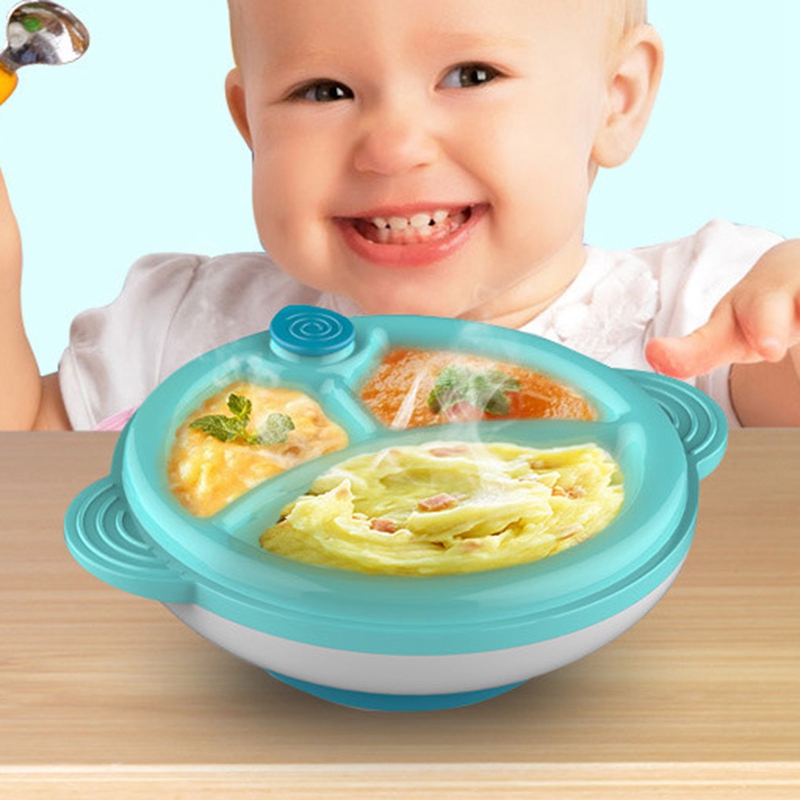
Combo-Fed Baby and Constipation :
For sure you have noticed that your combo-fed baby doesn’t poop a lot, maybe from 3 to 5 days, this will freak you out for sure. I will cheer you up, it’s normal as long as his stools are soft and don’t struggle when passing out.
However, if you notice these signs then it may be constipation. You should call your pediatrician :
- Being very fussy and spitting up more often (infants)
- Difficulty passing stools or seeming uncomfortable
- Hard, dry stools
- Pain when having a bowel movement
- Belly pain and bloating
- Large, wide stools
- Blood on the stool or toilet paper
- Traces of liquid or stool in a child’s underwear (a sign of fecal impaction)
- Having less than 3 bowel movements a week (children)
- Moving their body in different positions or clenching their buttocks
Source: Medlineplus.gov
If your baby has constipation and you search for the best soy formula for constipation; this article will help you.
If you see mucus in the poop or your LO has a poor eating, fever, or is sick, then it could be diarrhea. And you must see your pediatrician.
« if stools suddenly increase in number and looseness, suspect diarrhea. If it lasts for 3 or more stools, the baby has diarrhea. »
Source: www.seattlechildrens.org
Mucus in Combo-Fed Baby Stool :
« A small amount of mucus in stool is usually nothing to worry about. Stool normally contains a small amount of mucus — a jelly-like substance that your intestines make to keep the lining of your colon moist and lubricated. »
Source: www.mayoclinic.org
For newborns, it’s not a concern when passing with meconium. Furthermore, it can be a sign that your baby is growing teeth.
Moreover, mucus with constipation, diarrhea, or blood can be a serious problem, then you should call your pediatrician.
Mixed Feeding Baby with Goat Milk Formula :
goat’s milk formula is recommended when your baby is sensitive to breast or cow’s milk, it’s much easier for your baby to digest because of oligosaccharides prebiotics.
A mixed-feeding baby with goat milk has a thick greenish-yellow poop and a soft-wet texture with no lumps. The greenish-yellow color comes from the iron in the formula. On the other hand, the soft to runny texture is coming from the breast milk.
Mixed Feeding Baby With Differents Brands:
- Enfamil NeuroPro :
Moms who are using Enfamil NeuroPro are seeing a dark yellow, sometimes orange mushy to runny poop, a frequency of 2-4 poop a day, and the smell ranges from mild to absolutely heinously stinky.
Related: Best 9 Generic Brands of Enfamil NeuroPro Infant Formula
- Similac Pro advanced (ready to feed) :
Many users of this formula say that you will see a big poop with brown color and a smell like death, the frequency is a poop every 2-3 days.
- Similac pro sensitive :
Well, I have found only the frequency; a poop every 4 days.
Related: Best 7 Generic Brands For Similac Sensitive Formula (Cheap!!)
- Enfamil Gentlease :
A poop once a day to every few days, with a greenish color and smell like rotten cookies.![]() The consistency is runny to peanut butter like with curds.
The consistency is runny to peanut butter like with curds.
- Similac Total Confort :
Moms on this formula found in diapers a runny poop with a green to dark green color and a foul-smelling odor with a frequency of twice a day. Most users of this formula recommend switching it.
Related: Best 6 Generic Brands For Similac Total Comfort Formula (Cheap!!)
- Neocate Formula:
When introducing this formula you will see 1 to 2 dirty diapers every few days with a bad smell. The poop is runny and more green.
If you are using a hypoallergenic formula; you may want to see what does a hypoallergenic formula poop looks like?
Conclusion:
have you seen how much information could a baby’s poop give about his health, try to apply it to your baby and call your pediatrician if you see any warning signs, and along with time, you will get used to your combo-fed baby poop color, consistency, frequency, and smell and you will notice any change quickly.
If you still have questions feel free to comment below.
Resources:
Medlineplus.gov
www.seattlechildrens.org
www.mayoclinic.org
Images Sources:
https://www.babycenter.com/baby-poop-photos
Tags: baby poop, baby poop and constipation, combo fed baby poop, mix fed baby poop, mix feeding poop
Common Combination Feeding Problems & Concerns
Learn more about common concerns surrounding combination feeding including advantages and disadvantages of combination feeding together with Aptaclub.
Common
combination feeding challenges and concerns- Breastmilk supply: Maintaining your breastmilk supply if combination feeding with formula can be a challenge for some. Spreading your baby’s bottle feeds out and ensuring you still give regular breastfeeds through the day and night to trigger your body’s supply and demand cycle of milk production will help ensure you maintain adequate breastmilk for your baby.
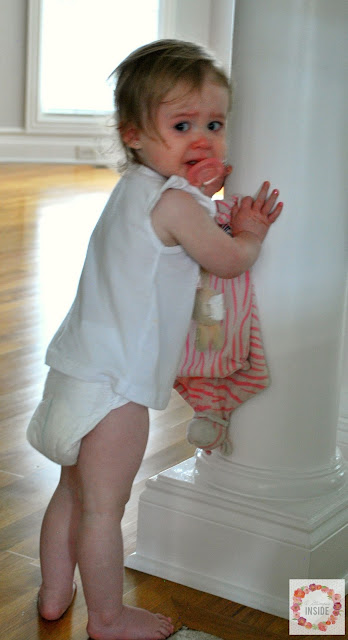 You can read more about this here.1,2
You can read more about this here.1,2 - Breast engorgement: Longer intervals between breastfeeds may also cause your breast to become overfull and lead to engorgement. Should this happen, you can gently hand express off some of the excess milk to make you more comfortable.3
- Baby won’t take a bottle: Breastfed babies may take time to learn to drink from a bottle as they need to suck a little differently than from the breast. Every baby is an individual and so they may take to combination feeding differently and at different speeds. Being patient and practicing responsive bottle feeding will help.4
Understanding your baby’s feeding cues
In this video, Midwife Pip talks about common feeding cues a baby will display; clear signs showing that they’re hungry. Learn more about the early, mid, and late feeding cues, that include your baby opening their mouth, or “rooting”, crying, or being agitated. Midwife Pip explains how to feed newborn babies based on their early feeding cues, rather than following a rigid feeding schedule.
Are there any disadvantages of combination feeding?
If exchanging some breastfeeds for formula milk then your baby will not receive as many antibodies and so their immune system may not be as well protected from certain infections.2
Due to the supply and demand nature of breastfeeding, meaning the more your baby breastfeeds the more milk your produce, introducing formula bottle feeds may reduce your milk supply.3
Bottle feeding requires you to obtain some additional equipment such as a steriliser, feeding bottles and either a breast pump or formula.
Is combination feeding bad for my baby?
Combination feeding is not bad for your baby, any breastmilk for baby’s is better than none and the more breastmilk you give, the more antibodies they will receive. It is just important to ensure you follow the advice to support your milk supply. 2,5
Advantages of combination feeding; benefits of mixing breastmilk and formula
Combination feeding also has some advantages for parents.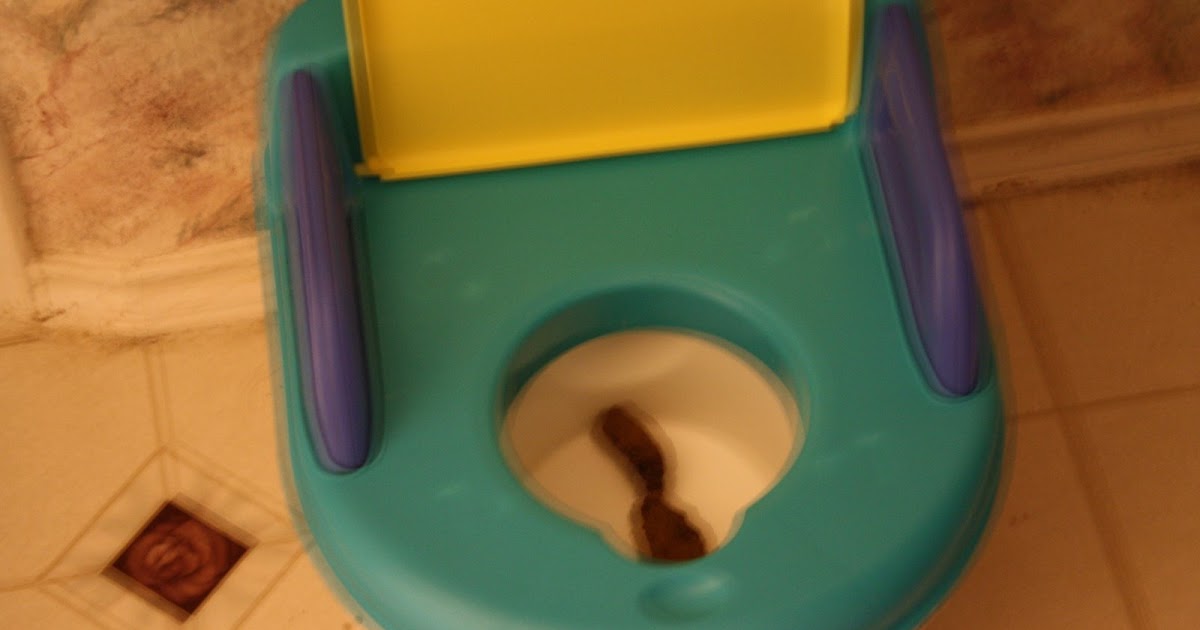 The benefits of mixing breastmilk and formula are often around enabling partners to be involved with feeding your baby and giving breastfeeding mothers some more time to rest.2
The benefits of mixing breastmilk and formula are often around enabling partners to be involved with feeding your baby and giving breastfeeding mothers some more time to rest.2
Combination feeding may also allow your baby to be fed by someone else if you are returning to work.
Do combination formula fed babies gain weight faster?
Babies gain weight at different rates and baby weight gain varies depending on many factors such as genetics, activity level and whether they are breastfeeding, formula feeding or combination feeding. Bottle fed babies are at risk of overfeeding because it is harder for your baby to control the flow of the milk and it is easier for you to accidentally pressure them to drink more milk than they need. Practicing responsive bottle feeding with your baby will help to prevent overfeeding.2,6
Can combination feeding cause tummy ache?
When babies drink from a bottle they inhale more air than they do drinking from the breast, this trapped air can cause tummy ache in babies, so it is important to wind your baby during and after a bottle feed. 7
7
Can combination feeding cause colic?
There is no definitive, known cause for colic in babies. It is thought that it may be because young babies find it harder to digest milk leading to discomfort in their tummy. Babies who are breastfeeding, formula feeding, or combination feeding may get colic and it is most common in the first 6 months8. To read more about Colic in babies read here.
Can combination feeding cause constipation?
Constipation in babies can be caused by the change from breastmilk to formula milk as their digestive system adapts. If babies are not feeding enough, they may become dehydrated which may also lead to constipation9. You can learn more about constipation in babies here.
Does combination feeding affect my baby’s poop?
Breastfed babies typically poop more frequently than formula fed babies. When combination feeding with formula your baby may poop less often. Monitoring your baby’s nappies and noticing regularly wee’s and poo’s is a good sign that they are feeding well whether that may be breastfeeding, formula feeding or combination feeding.2
Monitoring your baby’s nappies and noticing regularly wee’s and poo’s is a good sign that they are feeding well whether that may be breastfeeding, formula feeding or combination feeding.2
Does combination feeding cause more wind in babies?
Formula milk may cause more wind in babies than breast milk fed babies. Additionally, when babies drink from a bottle they inhale more air bubbles than when they drink from the breast and this may also cause more wind. Winding your baby regularly during and after feeds can help prevent discomfort from wind in babies7. Read the Aptaclub guide to winding your baby here.
Can combination feeding cause reflux?
Breastfed, formula fed or combination fed babies can all develop reflux. Reflux occurs because the muscle at the bottom of your baby’s food pipe is still developing and sometimes, commonly when their tummy is full, some milk and stomach acid is allowed to pass through this muscle and can move back up again. Feeding your baby little and often, burping regularly and keeping them upright after feeds may all help symptoms of reflux10. Learn more about reflux in babies here.
Feeding your baby little and often, burping regularly and keeping them upright after feeds may all help symptoms of reflux10. Learn more about reflux in babies here.
Pip Davies
Pip is a practicing Midwifery Sister with many years of experience supporting families through pregnancy, birth, and the postnatal period. Pip is enthused by empowering women with evidence-based, honest information through her Online Your Pregnancy Journey and Antenatal Education Courses. Pip is also the founder of the Midwife Pip Podcast as she believes quality information should be accessible to all.
Read more
Read more
References
- Britton, C., McCormick, F., Renfrew, M., Wade, A. and King, S. (2007) Support for breastfeeding mothers. Cochrane Library. Available at: https://www.nhs.uk/conditions/baby/breastfeeding-and-bottle-feeding/bottle-feeding/combine-breast-and-bottle/ [Accessed: 24th November 2021]
- NHS (2019) How to combine breast and bottle feeding.
 Available at: https://www.nhs.uk/conditions/baby/breastfeeding-and-bottle-feeding/bottle-feeding/combine-breast-and-bottle/ [Accessed: 25th November 2021]
Available at: https://www.nhs.uk/conditions/baby/breastfeeding-and-bottle-feeding/bottle-feeding/combine-breast-and-bottle/ [Accessed: 25th November 2021] - Kent, J., Prime, D. and Garbin, C. (2012) Principles for maintaining or increasing breast milk production. Journal of Obstetricians, Gynecologists and Neonatal Nurses. 41 (1), pp. 114-121.
- Maxwell, C., Fleming, K., Fleming, V. and Porcellato, L. (2020) UK mothers' experiences of bottle refusal by their breastfed baby. Maternal & Child Nutrition. 16 (4).
- NHS (2021) How to breastfeed. Available at: https://www.nhs.uk/start4life/baby/feeding-your-baby/breastfeeding/how-to-breastfeed/burping-your-baby/#anchor-tabs [Accessed: 22nd November 2021]
- UNICEF (2016) Responsive Feeding: Supporting close and loving relationships. Available at: https://www.unicef.org.uk/babyfriendly/wp-content/uploads/sites/2/2017/12/Responsive-Feeding-Infosheet-Unicef-UK-Baby-Friendly-Initiative.pdf [Accessed: 21st November 2021]
- UNICEF (2021) Guide to Bottle Feeding Leaflet.
 Available at: https://www.unicef.org.uk/babyfriendly/baby-friendly-resources/bottle-feeding-resources/guide-to-bottle-feeding/ [Accessed: 22nd November 2021]
Available at: https://www.unicef.org.uk/babyfriendly/baby-friendly-resources/bottle-feeding-resources/guide-to-bottle-feeding/ [Accessed: 22nd November 2021] - NHS (2021) Breastfeeding challenges. Available at: https://www.nhs.uk/start4life/baby/feeding-your-baby/breastfeeding/breastfeeding-challenges/colic/#anchor-tabs [Accessed: 21st November 2021]
- NHS (2021) Breastfeeding challenges. Available at: https://www.nhs.uk/start4life/baby/feeding-your-baby/breastfeeding/breastfeeding-challenges/constipation/#anchor-tabs [Accessed: 21st November 2021]
- NHS (2021) Breastfeeding challenges. Available at: https://www.nhs.uk/start4life/baby/feeding-your-baby/breastfeeding/breastfeeding-challenges/reflux/ [Accessed: 21st November 2021]
Last reviewed: 24th March 2022
Reviewed by Pip Davies
- Aptaclub home
- Baby
- Diet and nutrition
- Bottle-feeding
- Common combination feeding questions and concerns
What should be the chair of a newborn on artificial and breastfeeding
Kizino Polina Aleksandrovna
pediatrician, perinatal psychologist
Green, frothy, thick stools - is this normal for a baby? What should be the normal stool of the baby and how to distinguish age-related changes from warning signs that require a visit to the doctor.
— Polina Alexandrovna, is the stool of a child different on breast, mixed and artificial feeding?
— Normally, the stool in children of the first year of life on different diets is different.
- Newborn stool - what is considered normal?
— A newborn — a child of the first 28 days of life — undergoes a restructuring of the body and the transition from intrauterine to extrauterine independent life. And his chair will seem strange and unusual to many mothers - but this is not a pathology.
- Original feces - meconium - has the consistency of a thick ink paste of dark green, almost black color.
- 2-3 days - transitional stool - partly dark green, with time it becomes mushy.
- 4-5 days — scattered stool — it includes a liquid part, white undigested lumps, sometimes streaks of mucus.
- Days 12-14 — from the end of the second week, normal stool begins to form, which will remain unchanged in the future.

Every newborn goes through transitional states, because he begins to receive milk nutrition, proteins and fats enter his intestines. Naturally, the mucous membrane of the gastrointestinal tract adjusts to the new nature of nutrition, and stool disorders may occur. In addition, the intestinal microflora undergoes changes: by the end of the first - the beginning of the second week, the pathogenic flora of the newborn is replaced by normal flora, and bifidobacteria generally begin to play a dominant role. These factors lead to significant changes in the chair, which should not be scared.
— What determines the shape and type of feces of a newborn and an infant?
- The nature of the stool depends on the characteristics of the child's digestive tract and the nutrition of the nursing mother - the baby may tolerate some foods better or worse.
- If the baby is malnourished, the stool is less frequent, the consistency thickens.
- If the mother diluted the mixture incorrectly - added more or less water - there will be a thickening or thinning of the stool.

- If a child's drinking regimen is disturbed - the temperature is elevated and he loses a lot of moisture, or the heat is on, and fluid reserves are not replenished, the stool may become more dense.
— Does the regularity of the stool in the first year of life change from month to month?
— The older the child gets, the less frequent bowel movements occur.
- A newborn child has up to 8-10 stools. A bowel movement is possible after or during each meal - and this will be the norm.
- Stools at 2 months normally have adequate intervals of 3-3.5 hours during the day and 4 hours at night. In the future, the nature of the chair reflects the nutrition of the child.
- Stool from 5-6 months - dense 1-2 times a day or 1 time in two days; it is more decorated and looks like an adult's chair.
— Does the stool change during feeding?
— The baby's stool normally becomes denser with the start of the introduction of complementary foods. This does not happen immediately - complementary foods are introduced gradually, in microdoses, and when the portion is brought to the age norm, the stool changes its character more clearly. If complementary foods are introduced quickly with large doses, the child's body will not have time to cope with the new food and react with constipation. With intolerance and an allergic reaction, after the introduction of new products, stool liquefaction with the appearance of streaks of blood or mucus is possible - this is an alarm signal that requires a medical examination. For complementary foods, you need to choose foods according to the age of the child, because not everything is suitable for the first acquaintance with new food.
This does not happen immediately - complementary foods are introduced gradually, in microdoses, and when the portion is brought to the age norm, the stool changes its character more clearly. If complementary foods are introduced quickly with large doses, the child's body will not have time to cope with the new food and react with constipation. With intolerance and an allergic reaction, after the introduction of new products, stool liquefaction with the appearance of streaks of blood or mucus is possible - this is an alarm signal that requires a medical examination. For complementary foods, you need to choose foods according to the age of the child, because not everything is suitable for the first acquaintance with new food.
— How often should a baby have a bowel movement?
- For a small child who receives only milk nutrition, the stool rate is a floating concept. It is necessary to build on what is normal for a particular child: this applies to the regularity, consistency, and color of the stool.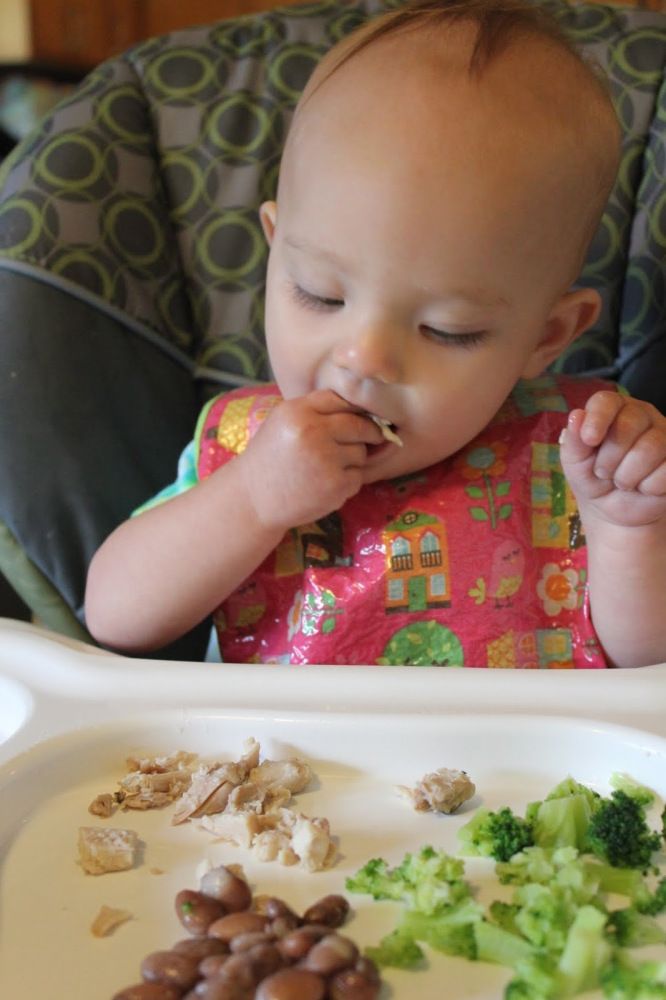
Chair norm
- A chair eight to ten times a day is normal, if the newborn is comfortable, he is calm and he always has such a frequency of stool.
- A chair once a day or once every two days is the norm, if the child is calm, he does not strain constantly and poops on his own.
- Stool with undigested lumps is normal if the child's condition is in order.
Abnormal chair
- If a child has a stable stool eight times a day for two months, but suddenly he stops pooping within one or two days, this is not the norm.
- The chair is stable once a day, but suddenly the bowel movements occur for the sixth time in the last four hours - this is not the norm.
Any deviation from the norm and anxiety of the child requires examination by a pediatrician to rule out pathology.
The stool norm for a child of the first year of life is quite wide - its color and consistency may be different. The most important thing is to understand your child's stool pattern so that you can evaluate if stools are more frequent or rarer than usual. Mucus in the stool, frothy stools in the baby, and small single streaks of blood in the stool are not critical, but require the child to be examined by a doctor. The presence of scarlet blood in the stool several times in a row, the tarry color of the stool of the baby, prolonged diarrhea are indications for immediate medical attention.
The most important thing is to understand your child's stool pattern so that you can evaluate if stools are more frequent or rarer than usual. Mucus in the stool, frothy stools in the baby, and small single streaks of blood in the stool are not critical, but require the child to be examined by a doctor. The presence of scarlet blood in the stool several times in a row, the tarry color of the stool of the baby, prolonged diarrhea are indications for immediate medical attention.
* Breast milk is the best food for babies. WHO recommends exclusive breastfeeding for the first 6 months of a child's life and continued breastfeeding after complementary foods are introduced until the age of 2 years. Before introducing new products into the baby's diet, you should consult with a specialist. The material is for informational purposes and cannot replace the advice of a healthcare professional. For feeding children from birth. The product is certified.
#Baby Development #breast-feeding #in a diaper 0-6
See also
Diarrhea in infants - what causes and how to treat
#Tips for Mom #in diaper 7-12
Shcherbakova Alla Anatolyevna
Candidate of Medical Sciences, pediatrician, gastroenterologist
How to help a baby with colic
#Tips for Mom #Baby digestion #colic #colic 0-6 #colic 7-12
Shcherbakova Alla Anatolyevna
Candidate of Medical Sciences, pediatrician, gastroenterologist
How to improve the digestion of a newborn
#Tips for Mom #colic #baby formulas #newborns
Shcherbakova Alla Anatolyevna
Candidate of Medical Sciences, pediatrician, gastroenterologist
See all
View all
Diarrhea in infants - what causes and how to treat
# Tips for mom # in a diaper 7-12
Shcherbakova Alla Anatolyevna
Candidate of Medical Sciences, pediatrician, gastroenterologist
How to improve the digestion of a newborn
# Tips for mom # colic #koliki # newborn formulas # newborns
Shcherbakova Alla Anatolyevna
Candidate of Medical Sciences, pediatrician, gastroenterologist
How to help a baby with colic
# Tips for mom # Baby's digestion # pischevarenie # colic #koliki # colic 0-6 # colic 7-12
Shcherbakova Alla Anatolyevna
Candidate of Medical Sciences, pediatrician, gastroenterologist
See all
View all
View all
View all
Normal stool of newborns and children up to the first six months of life
The contents of a diaper excite every young mother. Any change or change in the frequency of bowel movements causes her to panic and forces her to look for diseases in the child. We understand how the gastrointestinal tract works in infants and what the baby's stool should be like.
Any change or change in the frequency of bowel movements causes her to panic and forces her to look for diseases in the child. We understand how the gastrointestinal tract works in infants and what the baby's stool should be like.
Peculiarities of digestion in an infant
Despite the long intrauterine development, many systems and organs of a newborn child cannot fully perform their functions. The gastrointestinal tract is no exception. Babies don't have teeth to chew solid food, and their liver and pancreas don't produce enough enzymes.
In addition, the baby is born with a sterile intestine. Its settlement with beneficial microflora occurs in the first weeks of life, and full development can last up to a year. Children of the first half of the year eat only breast milk or a milk mixture adapted for their intestines. Feeding whole milk or fermented milk products is dangerous to his health.
The baby's stool is also different. In the first days of life, a newborn baby passes meconium - the original feces are usually dark green or black. Then it gradually changes color, smell and texture. What exactly it will be depends on the type of feeding and the characteristics of the child himself.
Then it gradually changes color, smell and texture. What exactly it will be depends on the type of feeding and the characteristics of the child himself.
Stool norm in newborns and children up to a year
Normal stool indicators depend on how the mother feeds the child, whether he has congenital gastrointestinal diseases, allergies or intolerances. The frequency of stool in a newborn and children in the first half of life also depends on this.
| Type of | Description |
| Chair in newborns while breastfeeding | In the first six months, the stool is mushy, soft, blotches and inclusions may occur. The first months does not smell strongly, then the smell changes. May be completely absent for several days. |
| Chair in infants with artificial feeding | The chair is regular from one to 6 times a day. |
With mixed feeding, the frequency and appearance of the stool depends on the proportion in which the child receives breast milk and an adapted mixture.
At first, the baby can defecate after each feed. Over time, stool frequency decreases and volume increases. This can be scary for new parents. Our doctors remotely and at any time of the day will answer all questions about the health of the child and help determine when stool changes indicate pathology.
Newborn stool color
The second parameter, after the frequency, to which mothers pay the closest attention, is the color of the child's stool. Normally it is yellow or orange. It can be plain or with white patches. This color is typical for fresh stools when the baby has just gone to the toilet.
When exposed to air, the feces oxidize and become greenish in color. This is not a pathology. This color of the stool does not require treatment or medical attention. However, a sharp change in color, consistency or frequency of bowel movements, the appearance of foam, blood and streaks in the feces can indicate digestive problems - lactase deficiency, constipation, allergies, dysbacteriosis.
What problems does stool disorder indicate?
It is believed that the feces of a newborn should depart daily and not cause him any inconvenience. However, in children who are fully breastfed, stools may be completely absent up to 6 days. If after that the baby defecates without problems, and the feces themselves remain soft, this is considered a variant of the norm.
However, in some cases, a violation or change in bowel movements can indicate problems with digestion. The main ones are:
- constipation;
- diarrhea;
- allergy;
- intolerance to certain products;
- lactase deficiency;
- bleeding in the gastrointestinal tract;
- cracks.

The main symptoms to look out for include the following:
- the child becomes restless and capricious;
- he draws his legs to his stomach;
- the chair becomes rare and dense;
- the stool becomes too liquid and frequent;
- mucus, blood streaks, black blotches appear in the feces;
- stool immediately green;
- he smells bad;
- foam is visible in the feces.
These symptoms should be reported to the health visitor or pediatrician during the preventive visit. If blood is found in the diaper, you should immediately call an ambulance and hospitalize the child.
Changes in stool may indicate problems with the gastrointestinal tract in a child. It can be difficult for young parents to distinguish the norm from the pathology, so if you have any concerns, you should consult a pediatrician. Our doctors will answer all your questions about your baby's health, help you find the problem and tell you what to do in case of illness.
How to help your baby with stool problems
To help the baby, you need to understand why there are problems with the stool. To do this, the pediatrician will offer to undergo diagnostics - take blood tests, check feces, sign up for an ultrasound scan, colonoscopy or gastroscopy. The latter in young children are performed under general anesthesia and require temporary hospitalization.
After making a diagnosis, the doctor will suggest treatment and related activities:
- If an allergy is suspected, a nursing mother will be offered to follow a hypoallergenic diet. If the baby is bottle-fed, they will offer to change the mixture.
- Also, the doctor will give recommendations on the diet of the child. Breastfeed your baby freely, but less than once every two hours. Formula-fed babies can tolerate long intervals.
- In case of allergies, the child may be recommended to take antihistamines and sorbents.
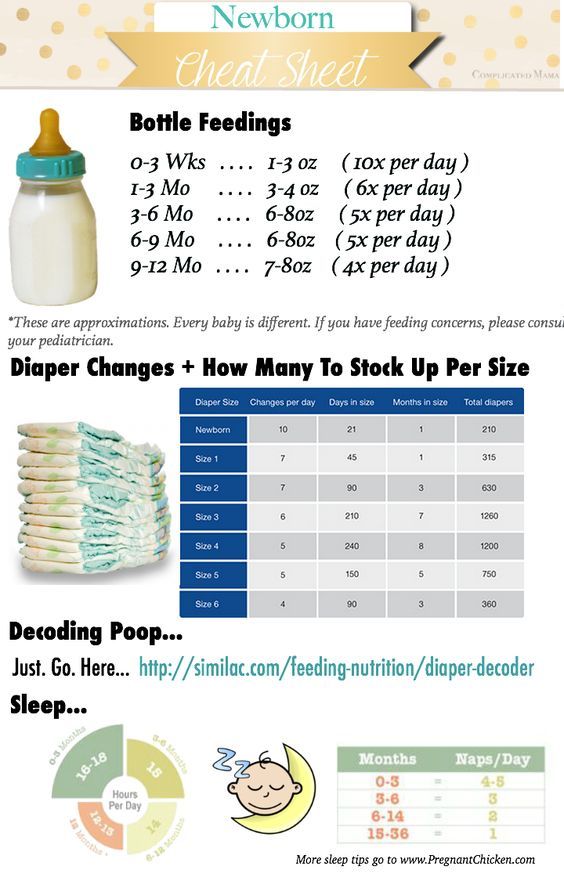
- With confirmed lactase deficiency, the child is either transferred to a lactose-free mixture, or it is recommended to give special enzymes before feeding.
- If constipation, diarrhea and dysbacteriosis are suspected, the child may be prescribed drugs to improve the stool or special mixtures with lacto- and bifidobacteria.
- If an infection is suspected, against which diarrhea began, the baby may be prescribed antibiotics and antiviral agents.
If during the examination congenital pathologies of the development of the gastrointestinal tract are detected, the doctor takes appropriate therapeutic and preventive measures. Which ones and for how long depends on the type of disease and its degree.
Important! Abdominal problems are often associated with increased gas or colic. In this case, it is recommended to massage the abdomen, put a warm heating pad on it, or put the bare tummy against the mother's stomach.
FAQ
How many times a day should a newborn have a stool?
+
In the first days of life, the child passes meconium.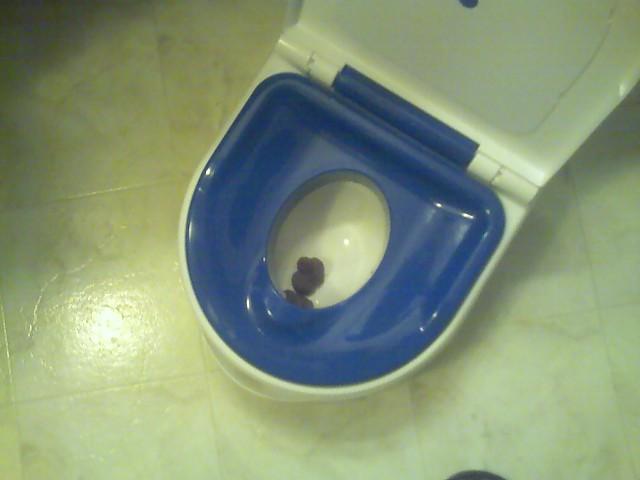 After that, the chair can be after each feeding. In a month-old baby, the frequency of stools is removed and varies from 1 to 6 times a day. In children who are fully breastfed, it can recede up to 6 days.
After that, the chair can be after each feeding. In a month-old baby, the frequency of stools is removed and varies from 1 to 6 times a day. In children who are fully breastfed, it can recede up to 6 days.
What does feces look like in newborns?
+
Newborn babies have black or dark green stools. Over time, it brightens, becomes yellow-orange. It may contain white blotches and heterogeneities.
What are the problems with the chair?
+
The problems are indicated by the absence of stool against the background of the child’s anxiety and a change in the consistency of feces, too frequent stools, bad smell, foam, green color of feces immediately after a bowel movement, the appearance of streaks and inclusions of red and black or mucus in it.
What to do if the child does not poop?
+
If the child behaves normally (does not cry, does not act up and does not tighten his legs), and after the stool is pasty and easily leaves, then nothing needs to be done.

 Often associated with feeding (a bowel movement occurs before or during it). Thicker, pasty, smells stronger than breastfed babies
Often associated with feeding (a bowel movement occurs before or during it). Thicker, pasty, smells stronger than breastfed babies 